Properly Loading a Trailer With Your Adjustable Drop Hitch
It is important to load your trailer properly before hitting the road. This not only makes the towing experience easier and more enjoyable, but also much safer. We will go over a few things you should consider every time you need to tow a trailer. While some of these points may only be specific to adjustable hitches, that main points are universal for towing any trailer in any way.
The first step in hitting the road with a trailer is to properly load your trailer. When loading your trailer, you goal should be to have the majority of the weight over the axles. About 60% of the weight should be in front of the axles, while about 40% behind the axles. When doing this, you should end up with about 10% of the total trailer weight on the tongue of the trailer. This will ensure that the tongue or front of the trailer is both not too light or too heavy when attached to the hitch. Tongue weight that is too light or too heavy can lead to issues when towing, such as trailer sway or unnecessary bouncing.
The second step when loading your trailer is to make sure the trailer is sitting level front to rear. With an adjustable hitch, lining up your hitch ball with your trailer coupler is simple. You must first start by putting your trailer of a flat, level surface. Next, adjust the jack on the front of your trailer until the frame on the front of the trailer is the same height from the ground as the frame on the rear of the trailer. A measuring tape can easily be used to check the height of the front and rear of the trailer. Once the trailer is set to a level height, you can now set the height of the ball on the hitch. The goal is to get the ball at the same height as the coupler on the front of the trailer. If the ball cannot be adjusted to the exact height, you will want to set the ball to the next highest point on the hitch. You can then attach the trailer to the ball or pintle hook.
Finally, you should always go through to check to make sure of a few different things: 1) the trailer chains are attached to the hitch receiver in a criss-cross pattern 2) the trailer lights and turn signals work and 3) the trailer brakes are working correctly and efficiently.
Once everything here is finalized, you should be ready to hit the road with a safe and reliable towing setup! These steps will work for any towing setup and issues while towing can usually be traced back to overlooking any of these steps.

